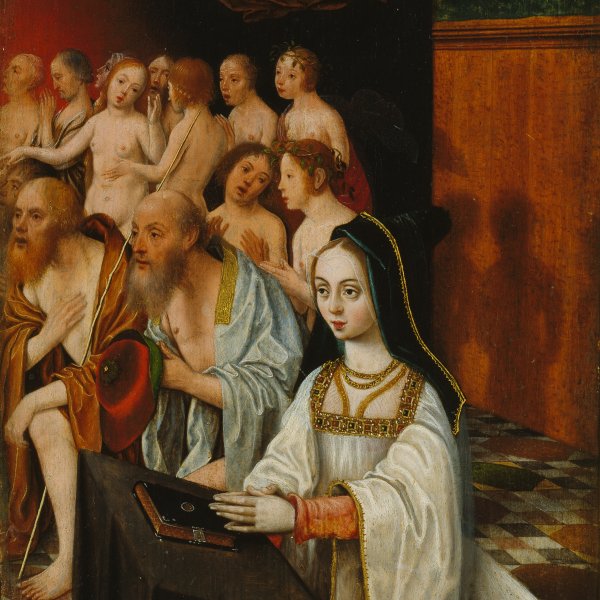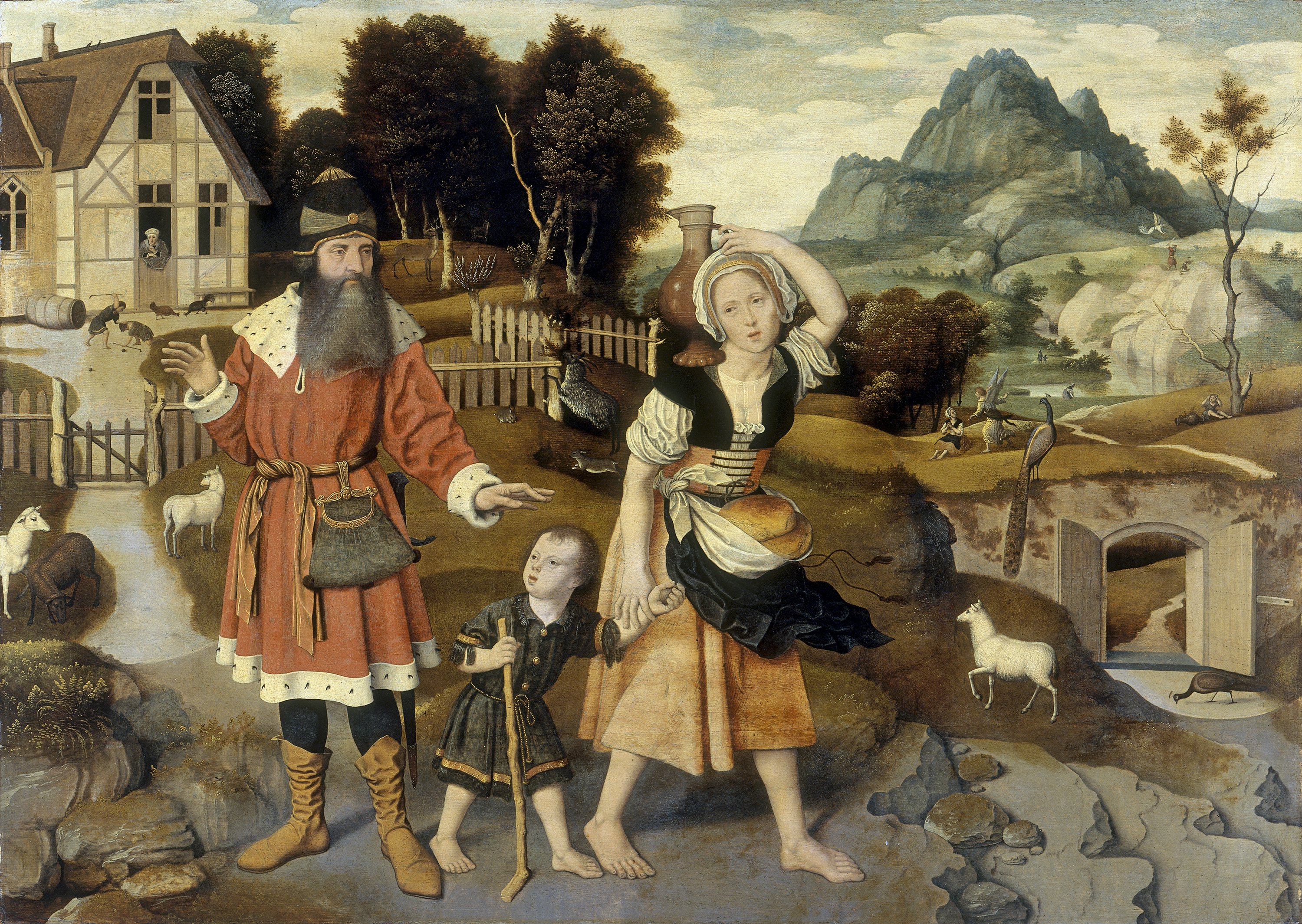The Expulsion of Hagar
Jan Mostaert was a painter of considerable renown, primarily known for his religious compositions and portraits. His work is characterised by a minute rendering of the details in a manner that can be related to manuscript painting. The backgrounds of his works are normally landscapes and reveal the evident influence of Joachim Patinir. This painting is a fine example of his narrative skills and includes various episodes from the same story, namely the Expulsion of Hagar as related in the Old Testament. The principal image is that of Abraham at the moment of sending away Hagar and their son Ishmael. Behind this scene are various episodes in which the story continues. On the left we see Abraham’s wife Sarah, looking from her front door at the scene of the expulsion, which she instigated. On the right are various moments in Hagar’s journey including the appearance of the angel that gave them water to drink and the episode of the sacrifice of Isaac, Abraham and Sarah’s son, taking place on a hilltop in the distance. The subject of the Expulsion of Hagar was extremely popular in the Low Countries in the 16th and 17th centuries.
NR
The artist’s narrative skills are evident in this panel, which Friedländer considered a typical and important example of his work. In addition to his abilities to recount a story, Mostaert’s abilities at painting landscape are also evident, with the figures inset into a landscape that has little to do with the traditional idea of a desert. It features a wide range of animals as well as striking and unusual elements such as the gateway on the right that opens onto the pathway leading into the distance. Ebbinge-Wubben drew attention to the detailed depiction of the elements in this view and considered the path, the small figures, and the shapes of the long, white clouds to be typical features of Mostaert’s style. The Expulsion of Hagar is a theme depicted in 17th-century Dutch art and has important 16th-century precedents such as prints by Lucas van Leyden and a painting now in the Gemäldegalerie in Vienna by an anonymous Dutch artist, formerly attributed to Cornelis Engebrechtsz.
Mar Borobia









